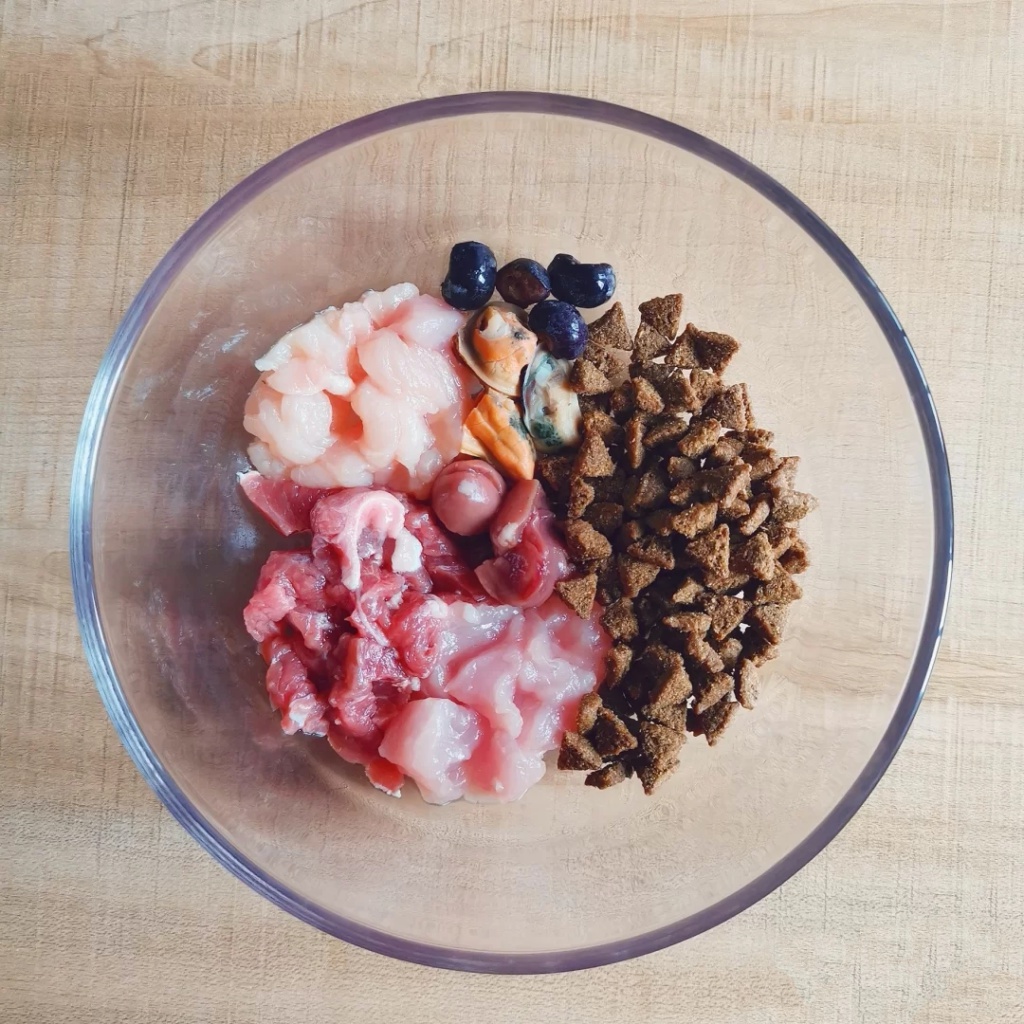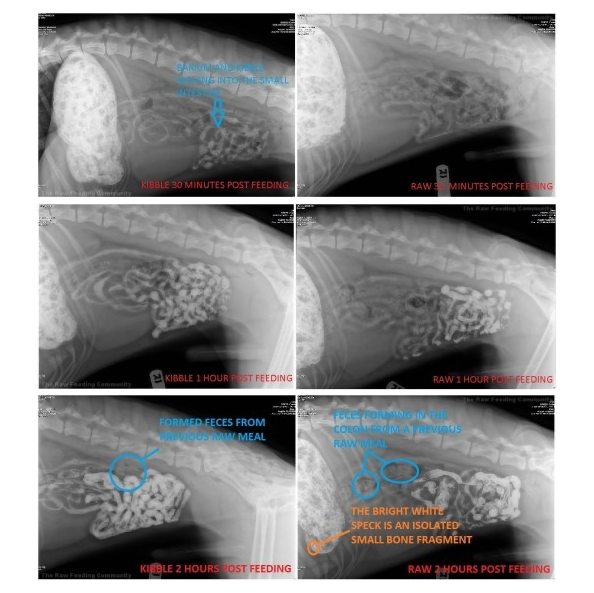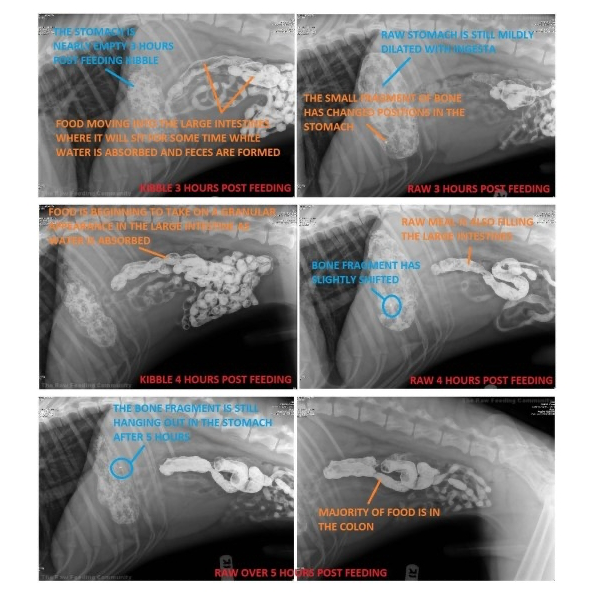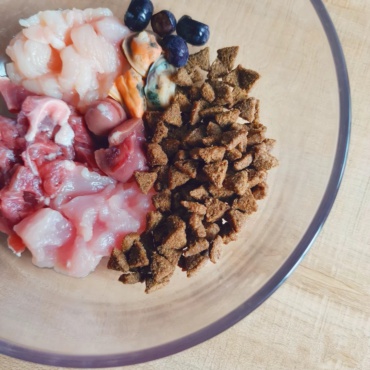I’ve always seen this question and always hear this answer in response:
“No! You should never mix kibbles and raw meat together. It will lead to problems because kibbles and raw meat have different digestion speeds and require different pH levels, so you can’t eat them at the same time. You should feed a fully raw diet, none of that kibbles cr@p. That’s like feeding McDonald’s to your pet every day.”
It has also gotten really annoying to see raw feeders with a holier-than-thou attitude bashing on or criticising other pet owners for feeding kibbles or mixed diets. Let’s just start off by saying this:
Feed the pet in front of you. What works for one may not always work for the other. There is no one RIGHT or WRONG feeding, and you should do what is right for YOUR PET. No one has the right to criticise another individual for their decisions.
Of course I’m not referring to people who are just feeding their pets the most blatantly obvious and unbalanced meals, those should be called out. I’m talking about most decent and thinking pet owners in this situation, who does not deserve being called out for their decisions on feeding their pets.
I can’t emphasise this enough: EDUCATE people, not put them down. When we all first started, we all know what it is like to be in a position of confusion with so much mixed information available on the Internet. Why not take the time to share your experience, your learning resources, and allow them to then make a decision for themselves on what is right for THEIR FAMILY.
Raw feeding may be cheap or expensive depending on the country. The owners may or may not have the time to prepare a nutritious meal. There are many factors that go into why someone decides on feeding raw/kibble/HCF/any of the above combinations.
Also, just to address that whole idea of kibbles being MacDonald’s. That is not exactly right. Kibbles are essentially balanced meals that provide the necessary nutrition for the pet to live. MacDonald’s are unbalanced fast food that is poor in providing many essential nutrients.
Rather, try thinking of kibbles as army rations.
Does it taste good? Probably not.
Does it look or smell appetising? Not really.
But does it hit the minimal daily nutrients requirements? Usually*, yes.
* Disclaimer: I am referring to kibbles that are of decent quality which abides by nutrition guidelines in these situations.
This seems to have turned into a rant (lol). Now that the rant is over *sorry for ranting*, let’s get back to the point of this post.

So, it is not true that you cannot mix kibbles and raw meat. Yes, the digestion speed will definitely be slightly different, but this does not mean that you cannot feed at the same time. Do you have to wait a few hours before eating meat when you eat grains?
Note: Some pets may have diarrhoea when eating kibbles + raw meat, but this is not because of digestion problems, but because the stomach is not used to it. Any change in diets usually causes some problems (even among different brands of kibbles if you have a pet with a sensitive stomach).
Remember, your stomach does not have a pH level button, it will not change stomach acid when digesting kibble or eating raw meat.
Breaking Down “Digestion”
Geddit geddit? Breaking down? Digestion? (Okay sorry I’ll just show myself out.)
Digestion is the process of extracting nutrients from food and then transporting the released nutrients from the gastrointestinal tract to the body, where they are used for energy and tissue growth. The stomach and small intestine are the main parts of digestion. The stomach does not absorb nutrients, it releases them from food and destroys pathogenic bacteria such as Salmonella. The longer the food spends in the stomach, the greater the amount of digestion (this is good).
It is the small intestine, not the stomach, that absorbs nutrients. The nutrients released from the food are absorbed into the blood through the intestinal wall. The speed of food passing through the intestine will affect the number of nutrients that the small intestine can absorb. Fast-moving food cannot absorb too much nutrition. (Note: This might be where the misinformation starts.)
A recent experiment was conducted to observe the digestion speed of dry food and raw meat (see picture below). The researchers used X-rays and barium (a radiopaque liquid mixed with food) to trace dry food and raw meat through the gastrointestinal tract. Although only one dog was examined, its original digestion rate was slower than that of kibbles, which overturned the general statement that “raw meat digests faster than dry food”. In fact, liquids are emptied from the stomach faster than solids, and carbohydrates are excreted faster than protein and fat.


The above images were taken from The Raw Feeding Community, a great online source for raw feeders. I highly recommend heading on over to their post for a detailed explanation on the hour by hour breakdown of the meals being digested. Click here to be brought over to the original post.
Back to the explanation, when food enters the stomach, it will be soaked in stomach acid. Then, depending on the degree of swelling, the stomach will release an appropriate amount of gastric acid to control the dilution, so the pH can be maintained at a high acid level initially. Dilution is part of the digestion process. It occurs gradually through the digestive tract. What you don’t want to do is to have undiluted acid coming out the other end. Just thinking about it is painful.
The stomach has an excellent design and has served dogs and cats for thousands of years. As an example, when calcium is felt in the stomach, more stomach acid is released because bones are expected to appear due to the calcium content. More digestive juices are needed to break down bones than meat. There are more “sensors” and feedback mechanisms in the digestive system, which can effectively extract nutrients from various diets ingested by animals in different foods. We are at a time where we have access to a lot of information, let’s not fall for false information. Detailed research on pets has shown that mixing raw food and kibbles does not produce toxins or digestive challenges.
People have been feeding their pets a mixed diet for decades. Only recently has the trend of avoiding mixing become popular under the influence of false or wrong news. Studies have indeed shown that mixing some fresh raw food with kibbles is much healthier than kibbles alone. Complete + balanced raw meat is one of the best things you can feed your pet. But there are exceptions. Some owners may not have the time or money to feed raw meat, so we should not blame others for their choices. We all want the best for our pets, so please also give other pet owners the same respect, and do not fault them for a decision that they may have also made with the same best interests at heart (within reason of course).
Seriously though, please do not take my words out of context. What I’ve shared above is information from research that I have done. You should absolutely do your own research, start by reading up the blog I linked above to read about the experiment in detail. Then, come to your own conclusion on what is right for YOUR PET. You know best from experience and trials what works for YOUR PET.
